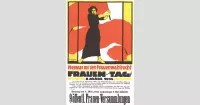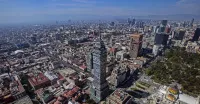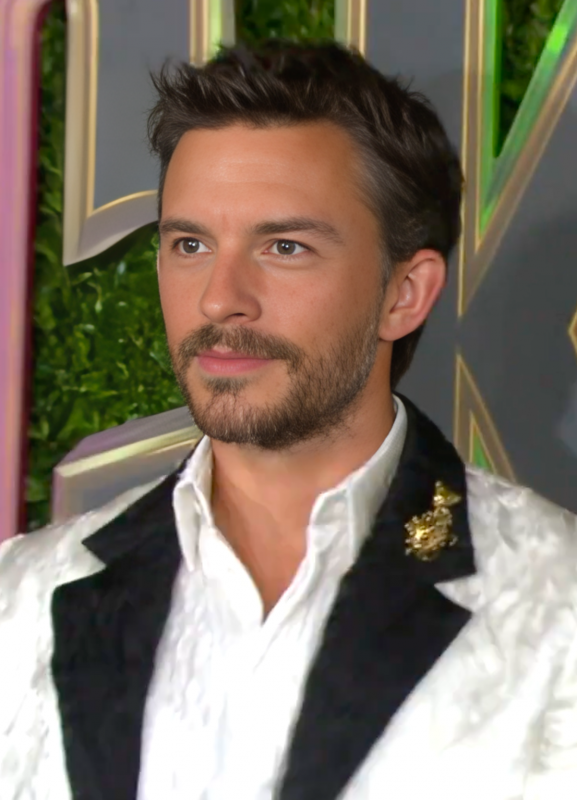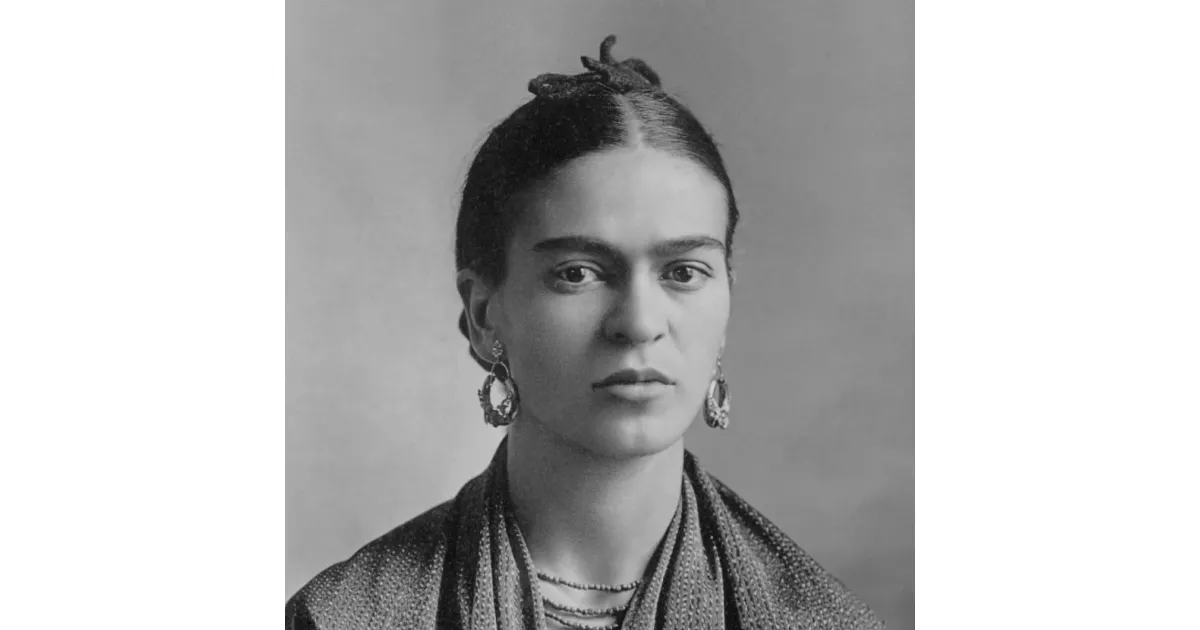Frida Kahlo was a Mexican painter celebrated for her distinctive portraits and self-portraits. Drawing inspiration from Mexican folk art, she explored themes of identity, postcolonialism, gender, and social class. Her work, infused with autobiographical narratives and a blend of realism and fantasy, reflected her physical and emotional struggles. Kahlo's art has been categorized as surrealist, magical realist, and aligned with the Mexicayotl movement, which aimed to define Mexican identity.
July 1907: Birth of Frida Kahlo
Frida Kahlo was born in July 1907.
July 1910: Birth of Frida Kahlo
Although Frida would later claim this as her birth year to tie herself to the Mexican Revolution, she was actually born in July of 1907.
1922: Frida attends the elite National Preparatory School
Frida Kahlo is accepted into the prestigious National Preparatory School, focusing on natural sciences. During her time there she becomes active in politics, joins the "Cachuchas," and meets Diego Rivera.
1922: First Meeting
Frida and Diego meet briefly while he is working on a mural at her school.
September 1925: Bus Accident
Frida Kahlo and her then boyfriend, Alejandro Gomez Arias, are involved in a horrific bus accident in September of 1925 that leaves Frida with life changing injuries.
1925: Kahlo Begins Working and Apprenticeship
In 1925, Frida Kahlo began working to support her family and became a paid engraving apprentice to Fernando Fernández.
1927: Return to socializing
By the end of 1927, Frida Kahlo begins to recover from her accident, rejoining her friends in political activism and joining the Mexican Communist Party.
1927: Kahlo Joins the Mexican Communist Party
In 1927, Frida Kahlo joined the Mexican Communist Party and met Diego Rivera.
June 1928: Frida meets Diego Rivera
At a party hosted by Tina Modotti in June 1928, Frida is formally introduced to Diego Rivera. She asks for his artistic opinion on her work, to which he replies that she has a natural talent.
August 1929: Frida and Diego Wed
Diego Rivera and Frida Kahlo marry in August 1929, despite her parent's disapproval. The pair are a popular subject in the Mexican press.
1929: Move to Cuernavaca and Inspiration from Folk Art
After moving to Cuernavaca, Mexico in 1929 with Diego Rivera, Frida Kahlo's artistic style was heavily influenced by the city and Mexican folk art.
1929: Kahlo Marries Diego Rivera
Frida Kahlo and Diego Rivera were married in 1929.
1930: Move to San Francisco
Following Diego's commission, he and Frida move to San Fransisco. There they enjoy a lavish lifestyle among wealthy patrons and Frida begins an affair with Nickolas Muray.
1930: Move to San Francisco and Artistic Development
Frida Kahlo and Diego Rivera moved to San Francisco in 1930, where she further developed her folk art style and had her work featured in an exhibition for the first time.
1931: Notable Paintings Created
In 1931, Frida Kahlo painted "Frieda and Diego Rivera" and "The Portrait of Luther Burbank".
1931: Return to Mexico and Trip to New York
The couple return to Mexico for the summer and travel to New York in the fall for Diego's retrospective at the MoMA.
April 1932: Arrival in Detroit
In April 1932, Frida and Diego travel to Detroit for his next mural commission. While there, Frida becomes bolder in her interactions with the press.
1932: Creation of "Henry Ford Hospital"
Frida Kahlo painted "Henry Ford Hospital" in 1932 after experiencing a miscarriage in Detroit. The painting depicts Kahlo's grief and pain, and also references the Mexican folklore figure La Llorona.
1932: Death of Matilde Calderón y González
Frida Kahlo's mother, Matilde Calderón y González, passed away in 1932.
1932: Move to Detroit, Health Challenges, and Artistic Experimentation
Kahlo moved to Detroit with Rivera in 1932, where she faced health problems but also experimented with new artistic techniques and explored themes of pain and suffering in her work, particularly through votive images or retablos.
March 1933: Return to New York
In March, the pair return to New York for Diego's commission at the Rockefeller Center.
December 1933: Return to Mexico
By December, after Diego is fired from the Rockefeller Center and completes a mural for the New Workers School, Frida and Diego return to Mexico.
1934: Return to Mexico City and Reduced Artistic Output
Frida Kahlo returned to Mexico City in 1934 and painted very little over the next two years due to health complications.
1935: Frida and Diego Separate
After suffering from several health issues and learning of Diego's affair with her younger sister, Cristina, Frida takes an apartment in Mexico City and considers a divorce. During this time she also has an affair with Isamu Noguchi.
1935: Reconciliation
Frida reconciles with Diego and Cristina, becoming a loving aunt to her sister's children.
1936: Return to Politics
Frida resumes her political career in 1936, joining the Fourth International and becoming a founding member of a committee to assist Republicans in the Spanish Civil War.
January 1937: Leon Trotsky arrives at La Casa Azul
After the Mexican government grants Leon Trotsky asylum, Frida and Diego offer him and his wife residence in La Casa Azul.
1937: Artistic Productivity Following Divorce and Reconciliation
Kahlo experienced a surge in artistic productivity in 1937 and 1938, following her divorce and subsequent reconciliation with Diego Rivera, creating works like "My Nurse and I" and "Memory, the Heart".
April 1938: Meeting André Breton and Recognition as a Surrealist
French Surrealist André Breton visited Diego Rivera in April 1938 and was impressed by Frida Kahlo's work, declaring her a surrealist and helping arrange her first solo exhibition in New York.
1938: First Solo Exhibition in New York
Frida Kahlo's first solo exhibition took place at the Julien Levy Gallery in New York in 1938.
January 1939: Exhibition in Paris and Challenges with the Gallery
Frida Kahlo traveled to Paris in January 1939 for an exhibition but encountered obstacles with the gallery, which refused to show most of her paintings, deeming them too shocking for the audience.
April 1939: Trotsky leaves La Casa Azul
Leon Trotsky leaves La Casa Azul in April, 1939 after a falling out with Frida and Diego.
November 1939: Divorce from Diego Rivera
In November 1939, Frida Kahlo and Diego Rivera were granted a divorce. This followed a period where Kahlo had returned to Mexico City after an exhibition in Paris and discovering her lover, Nickolas Muray, was planning to marry another woman. Though the exact reasons are unclear, Rivera stated there were no personal or financial motivations for the divorce. Despite their separation, they remained friendly.
1939: Start of a Prolific Period
After separating from Rivera in 1939, Kahlo entered a productive period, inspired by her travels and newfound independence. She began painting larger canvases and focused on more commercially viable quarter-length portraits. Notable works from this time include "The Two Fridas".
1939: Exhibition in Paris and Louvre Acquisition
Kahlo had an exhibition in Paris in 1939, and the Louvre purchased her painting "The Frame", making her the first Mexican artist in their collection.
August 1940: Trotsky's Assassination and Health Struggles
Tragedy struck in August 1940 when Leon Trotsky, who had previously stayed at La Casa Azul, was assassinated. Kahlo was briefly a suspect due to her connection to the murderer. This event, coupled with her divorce and alcohol use, further impacted her already fragile health. That same year, she traveled to San Francisco for treatment for back pain and a fungal infection.
December 1940: Reconciliation and Second Marriage to Rivera
In a twist of events, Kahlo and Rivera reconciled in December 1940 while both were in San Francisco. They remarried in a simple ceremony and returned to Mexico. Despite a less tumultuous first five years, both continued to have extramarital affairs.
1940: Exhibitions and Notable Works
In 1940, Kahlo's work was featured in three exhibitions, including the International Surrealist Exhibition in Mexico City and an exhibition at MoMA in New York. This period also saw the creation of some of her most renowned paintings, like "Self-portrait with Cropped Hair" and "Self-Portrait with Thorn Necklace and Hummingbird".
April 1941: Declining Health and Father's Death
Tragedy struck Kahlo again in April 1941 when her father passed away, leading her into a deep depression. Her physical health continued to worsen throughout the 1940s. Her spinal issues forced her to wear numerous corsets, and she battled leg pain, a chronic hand infection, and syphilis. Confined to La Casa Azul, she found solace in her home, garden, and companions.
1941: Death of Guillermo Kahlo
Frida Kahlo's father, Guillermo Kahlo, passed away in 1941.
1941: Exhibition at the Institute of Contemporary Art in Boston
Frida Kahlo's works were featured at the Institute of Contemporary Art in Boston in 1941.
1942: Founding Member of Seminario de Cultura Mexicana
In 1942, Frida Kahlo became a founding member of the Seminario de Cultura Mexicana, a group of artists commissioned to promote Mexican culture.
1943: Teaching Position at La Esmeralda
Frida Kahlo accepted a teaching position at the Escuela Nacional de Pintura, Escultura y Grabado "La Esmeralda" in 1943.
1943: Exhibitions in Philadelphia and New York
In 1943, Kahlo's work was included in exhibitions at the Philadelphia Museum of Art and Peggy Guggenheim's "The Art of This Century" gallery in New York.
1943: Exhibitions at Benjamin Franklin Library
Kahlo's paintings were featured in exhibitions on Mexican art at the Benjamin Franklin Library in Mexico City in 1943.
1944: Painting Reflecting Deteriorating Health
As Kahlo's physical condition worsened in 1944, her paintings began to mirror her struggles. "The Broken Column," with its graphic depiction of her spinal column and metal braces, is a poignant example of how her art became an outlet for her pain and frustration.
1944: Creation of "Broken Column"
Frida Kahlo painted "Broken Column" in 1944, reflecting her declining health.
1944: Mural at La Rosita
Kahlo and her students painted a mural at La Rosita, a pulqueria in Coyoacán, in 1944.
1944: Exhibitions at Benjamin Franklin Library
Kahlo's paintings were featured in exhibitions on Mexican art at the Benjamin Franklin Library in Mexico City in 1944.
June 1945: Spinal Fusion and Setbacks
In June 1945, Kahlo underwent a spinal fusion surgery in New York. The operation, intended to alleviate her back pain, unfortunately failed. Her refusal to rest properly and an incident where she reopened her wounds further hindered her recovery. Paintings like "The Broken Column" and "The Wounded Deer" reflect this period of declining health.
1945: Creation of "Moses"
Frida Kahlo completed her painting "Moses" in 1945.
1945: Mural Commissions
In 1945, Kahlo and her students were commissioned to paint murals for a Coyoacán launderette and the Posada del Sol hotel in Mexico City.
1946: Creation of "Tree of Hope, Stand Fast" and "The Wounded Deer"
In 1946, Kahlo painted "Tree of Hope, Stand Fast" and "The Wounded Deer", reflecting her struggles with her health.
1946: National Prize for "Moses"
Kahlo received a 5000-peso national prize for her painting "Moses" in 1946.
1946: Themes of Pain and Resilience in Art
Kahlo's artwork continued to reflect her physical and emotional struggles in 1946. Paintings like "Tree of Hope, Stand Fast" and "The Wounded Deer" depict themes of pain, resilience, and a yearning for healing, showcasing her ability to channel her experiences into powerful imagery.
1947: "The Two Fridas" Purchased by Museo de Arte Moderno
The Museo de Arte Moderno purchased Frida Kahlo's painting "The Two Fridas" in 1947.
1948: Rejoining the Communist Party
In 1948, Kahlo rejoined the Mexican Communist Party, signaling her continued commitment to social and political causes despite her deteriorating health. This marked a period of renewed political engagement.
1950: New Bone Graft Surgery and Confinement
Kahlo's health struggles continued in 1950. A new bone graft surgery in Mexico City resulted in a severe infection and multiple follow-up surgeries. Following her discharge, she primarily remained at La Casa Azul, relying on a wheelchair and crutches for mobility. Despite these challenges, she dedicated herself to political activism, campaigning for peace and collecting signatures for the Stockholm Appeal.
1951: Death of Matilde Kahlo
Frida Kahlo's sister, Matilde Kahlo, passed away in 1951.
April 1953: First Solo Exhibition in Mexico
Frida Kahlo's first solo exhibition in Mexico was held at the Galería Arte Contemporaneo in April 1953, organized by photographer Lola Alvarez Bravo.
August 1953: Leg Amputation and Despair
Tragically, Kahlo's right leg was amputated at the knee in August 1953 due to gangrene. This devastating event led to severe depression, anxiety, and increased reliance on painkillers. Her struggles were further compounded by Rivera's infidelity, leading to a suicide attempt by overdose.
February 1954: Contemplation of Mortality and Despair
By February 1954, Kahlo's physical and emotional suffering was profound. Her diary entries from this time, including one where she states, "Never in my life have I suffered more," reveal her despair and contemplation of suicide. Her reliance on Diego and the belief he would miss her remained a significant factor preventing her from taking her own life.
July 1954: Death of Frida Kahlo
Frida Kahlo passed away in July 1954.
July 1954: Final Public Appearance and Premonitions of Death
In July 1954, despite being mostly bedridden, Kahlo made her last public appearance alongside Rivera, protesting the CIA's intervention in Guatemala. This act demonstrated her unwavering commitment to her beliefs. Notably, she seemed aware of her impending death, openly discussing it and filling her diary with drawings of skeletons and angels, which many interpret as premonitions.
July 1954: Death and Speculation
On July 13, 1954, Frida Kahlo was found dead in her bed at the age of 47. The official cause of death was ruled a pulmonary embolism, though no autopsy was performed. However, the circumstances surrounding her death, including an alleged painkiller overdose and an early wedding anniversary gift to Rivera, led some, including biographer Hayden Herrera, to believe it may have been a suicide.
1954: Creation of Final Paintings
After a period of hospitalization, Frida Kahlo resumed painting in the spring of 1954, creating her last works, including "Marxism Will Give Health to the Sick," "Frida and Stalin," and "Viva La Vida".
1954: Death of Frida Kahlo
Frida Kahlo died in 1954 at the age of 47.
1957: Death of Diego Rivera
Three years after Frida Kahlo's death, her husband, Diego Rivera, passed away in 1957. He had proclaimed Kahlo's death to be "the most tragic day of my life."
1958: La Casa Azul Opens as a Museum
In 1958, Frida Kahlo's former home, La Casa Azul, opened its doors to the public as a museum dedicated to her life and work.
1964: Death of Cristina Kahlo
Frida Kahlo's sister, Cristina Kahlo, passed away in 1964.
1968: Death of Adriana Kahlo
Frida Kahlo's sister, Adriana Kahlo, passed away in 1968.
1976: First Book about Frida Kahlo Published
Marking a significant step in Kahlo's posthumous recognition, the first book dedicated to her life and work was published in Mexico in 1976 by Teresa del Conde.
1977: Growing Recognition and First Auction Sale
Further solidifying her rising fame, 1977 saw the publication of a second book about Kahlo by Raquel Tibol. In a landmark event, Kahlo's painting "The Tree of Hope Stands Firm" (1944) was auctioned at Sotheby's, fetching $19,000 and signifying her increasing value in the art market.
1978: First Major Retrospectives
Frida Kahlo's work received significant recognition with two major retrospectives held in 1978, one at the Palacio de Bellas Artes in Mexico City and another at the Museum of Contemporary Art in Chicago, showcasing her growing impact on the art world.
May 1982: Kahlo-Modotti Exhibition at Whitechapel Gallery
A pivotal moment in expanding Kahlo's global recognition was the joint retrospective of her paintings and Tina Modotti's photographs at London's Whitechapel Gallery in May 1982. Curated by Peter Wollen and Laura Mulvey, the exhibition traveled internationally, introducing Kahlo's work to a wider audience.
1983: Publication of "Frida: A Biography of Frida Kahlo"
Art historian Hayden Herrera's comprehensive biography, "Frida: A Biography of Frida Kahlo," was published in 1983. The book became an international bestseller, propelling Kahlo's life story into the public eye and further solidifying her status as a cultural icon.
1984: Mexico Declares Kahlo's Works National Heritage
In recognition of her cultural significance, Mexico declared Frida Kahlo's artworks as part of the national cultural heritage in 1984, prohibiting their export and solidifying her legacy within her home country.
1984: Release of "Frida, naturaleza viva"
Paul Leduc's biopic, "Frida, naturaleza viva," featuring Ofelia Medina as Kahlo, was released in 1984, further solidifying Kahlo's presence in cinematic narratives.
1985: Parque Frida Kahlo Dedicated in Coyoacán
As a tribute to her lasting impact, Mexico City dedicated a park, Parque Frida Kahlo, to Frida Kahlo in Coyoacán in 1985, featuring a bronze statue of the artist.
1990: Kahlo Breaks the Million-Dollar Mark
A testament to her growing influence in the art market, Frida Kahlo became the first Latin American artist to surpass the million-dollar threshold when her painting "Diego and I" sold for $1,430,000 at a Sotheby's auction in 1990.
1991: Premiere of Robert Xavier Rodriguez's "Frida" Opera
Frida Kahlo's life story was translated into the world of opera with the premiere of Robert Xavier Rodriguez's "Frida" at the American Music Theater Festival in Philadelphia in 1991.
1994: James Newton Releases "Suite for Frida Kahlo"
Expanding her influence into the musical realm, American jazz musician James Newton released an album titled "Suite for Frida Kahlo" in 1994, showcasing the inspiration she provided across artistic disciplines.
1999: Premiere of "Goodbye, My Friduchita"
Dolores C. Sendler's play "Goodbye, My Friduchita" premiered in 1999, offering a theatrical exploration of Kahlo's life.
2001: Publication of Barbara Mujica's "Frida"
Frida Kahlo's life story continued to inspire literary works, with Barbara Mujica's novel "Frida" published in 2001, exploring fictionalized aspects of Kahlo's experiences.
2001: Kahlo Honored with U.S. Postage Stamp
In a landmark recognition, Frida Kahlo became the first Hispanic woman to be honored with a United States postage stamp in 2001, solidifying her legacy and influence beyond the art world.
2002: Release of the Biopic "Frida"
Julie Taymor's biographical film "Frida," starring Salma Hayek as Kahlo, premiered in 2002. The film, based on Hayden Herrera's biography, grossed US$56 million globally and garnered six Academy Award nominations, winning for Best Makeup and Best Original Score.
2002: Premiere of "La Casa Azul" Play
Robert Lepage and Sophie Faucher's play "La Casa Azul" premiered in 2002, delving into Kahlo's life and the significance of her iconic blue house.
2006: Challenge to Kahlo's Jewish Heritage Claim
In 2006, German genealogists challenged the claim that Frida Kahlo's father was Jewish.
2006: "Roots" Sets New Auction Record
Kahlo's painting "Roots" (1943) achieved a new auction record for her work in 2006, selling for US$5.6 million, underscoring her enduring appeal and the increasing value of her art.
2007: Centenary Celebrations of Kahlo's Birth
The centenary of Frida Kahlo's birth in 2007 was met with several commemorative events, highlighting her enduring global impact and artistic legacy.
2008: Slavenka Drakulic's "Frida's Bed" Published
Adding to the growing body of literature inspired by Kahlo, Slavenka Drakulic's novel "Frida's Bed" was published in 2008, offering another fictionalized perspective on the artist's life.
2009: Premiere of "Frida Kahlo: Viva la vida!" Play
Humberto Robles' play "Frida Kahlo: Viva la vida!" premiered in 2009, providing another theatrical interpretation of Kahlo's life and spirit.
2009: Publication of "The Lacuna" and "Frida Kahlo: Viva la vida!"
The year 2009 saw the publication of Barbara Kingsolver's novel "The Lacuna," which features Frida Kahlo as a character. Additionally, Humberto Robles' play "Frida Kahlo: Viva la vida!" premiered, further showcasing Kahlo's influence across artistic mediums.
2010: Commemorations on Kahlo's Attested Birthyear
Further celebrations took place in 2010, marking the centenary of Kahlo's attested birthyear, showcasing the continued fascination with her life and work.
2012: Induction into Chicago's Legacy Walk
Honoring her impact and contribution to LGBTQ representation, Frida Kahlo was inducted into the Legacy Walk, an outdoor public display in Chicago celebrating LGBTQ history and figures, in 2012.
2014: Premiere of "Frida y Diego" Opera
Further showcasing her international appeal, Kalevi Aho's opera "Frida y Diego" premiered at the Helsinki Music Centre in Finland in 2014, exploring the relationship between Kahlo and Diego Rivera.
2014: Kahlo Honored on the Rainbow Honor Walk
In 2014, Frida Kahlo was chosen as one of the inaugural honorees on the Rainbow Honor Walk in San Francisco's Castro neighborhood, recognizing her significant contributions to the LGBTQ community and her enduring legacy.
2014: Premiere of "Tree of Hope" Play
Rita Ortez Provost's play "Tree of Hope" premiered in 2014, drawing inspiration from Kahlo's life and artwork to explore themes of resilience and hope.
2016: Debut of "Broken Wings" Ballet
Annabelle Lopez Ochoa's one-act ballet "Broken Wings," inspired by Frida Kahlo and with Tamara Rojo originating the role of Kahlo, premiered at the English National Ballet in 2016.
2016: "Two Nudes in a Forest" Fetches High Price
Further cementing her position as a sought-after artist, Kahlo's painting "Two Nudes in a Forest" (1939) was sold for $8 million in 2016, demonstrating the continuing appreciation for her work in the art market.
2017: Kahlo in Disney-Pixar's "Coco"
Expanding her presence in popular culture, Frida Kahlo was featured as a fictionalized supporting character in the 2017 Disney-Pixar animated film "Coco," voiced by Natalia Cordova-Buckley, introducing her to a new generation.
2017: "Frida Kahlo and her Animalitos" Published
Further introducing Kahlo to younger audiences, author Monica Brown and illustrator John Parra published the children's book "Frida Kahlo and her Animalitos" in 2017, highlighting the animals and pets in her life and artwork.
2018: Mattel Unveils Frida Kahlo Barbie Doll
In 2018, Mattel released a Frida Kahlo Barbie doll as part of a series honoring inspirational women for International Women's Day. The doll's design, however, sparked debate due to its perceived departure from Kahlo's distinctive physical features.
2018: Phelan Avenue Renamed Frida Kahlo Way
In a significant tribute to Frida Kahlo's legacy, the San Francisco Board of Supervisors voted unanimously in 2018 to rename Phelan Avenue to Frida Kahlo Way, honoring her cultural impact and contributions.
2019: Frida Kahlo Mural in Reno
A mural of Frida Kahlo, painted by Rafael Blanco, was unveiled in downtown Reno, Nevada in 2019.
2019: "Fantasmones Siniestros" NFT
In a publicity stunt in 2019, Frida Kahlo's artwork "Fantasmones Siniestros" ("Sinister Ghosts") was burned to ashes to promote a new Ethereum NFT.
2020: Premiere of Full-Length Ballet "Frida"
Expanding on the success of "Broken Wings," the Dutch National Ballet commissioned a full-length version of the ballet, titled "Frida," which premiered in 2020 with Maia Makhateli as Kahlo.
2022: Premiere of "El último sueño de Frida y Diego"
Gabriela Lena Frank's opera "El último sueño de Frida y Diego," exploring the final dreams of Kahlo and Rivera, premiered at the San Diego Opera in 2022, further cementing Kahlo's presence in the operatic repertoire.
2022: Swatch Releases Watch Inspired by "The Frame"
In 2022, Swatch collaborated with the Centre Pompidou to release a watch design based on Frida Kahlo's self-portrait "The Frame".
Mentioned in this timeline

Salma Hayek is a Mexican and American actress and film...

Ethereum is a decentralized open-source blockchain platform distinguished by its...

San Francisco is a major commercial financial and cultural hub...
Barbie is a fashion doll created by Ruth Handler and...

International Women's Day IWD celebrated annually on March th is...

Mexico City is the capital and largest city of Mexico...
Trending

7 months ago Candace Owens' Influence: Podcast Downloads, 'Womanosphere' Impact, and Family Life.
23 hours ago Akaash Singh and Myron Gaines in Feud Over Jasleen Singh's Podcast
15 days ago Apple to integrate Google's Gemini AI for Siri in a $1B deal.

5 months ago Scarlett Johansson Kisses Jonathan Bailey at Premiere, Colin Jost Present.
12 days ago TSMC Sales Slowdown Sparks AI Debate; October Revenue Rises But Below September Surge.

27 days ago Jamal Murray and Nikola Joki? discussed by David Adelman; Nuggets face Warriors and Suns.
Popular

William Franklin Graham III commonly known as Franklin Graham is...

XXXTentacion born Jahseh Dwayne Ricardo Onfroy was a controversial yet...

Cristiano Ronaldo often nicknamed CR is a Portuguese professional footballer...

Marjorie Taylor Greene known as MTG is a far-right American...

Candace Owens is an American conservative political commentator and author...

Michelle Obama is an American attorney author and former First...
